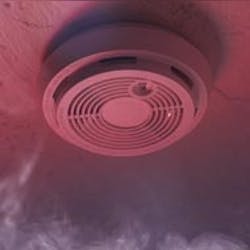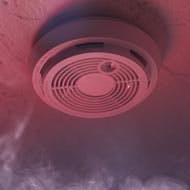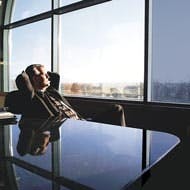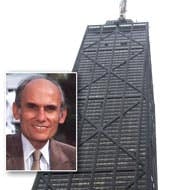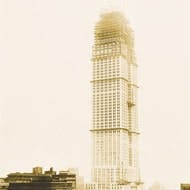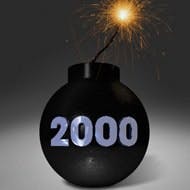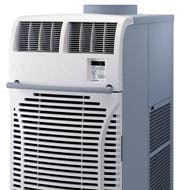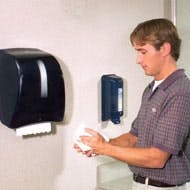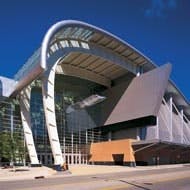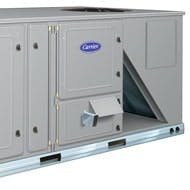100 Influences That Have Shaped the Buildings Market: Page 3
3 of 4
Buildings launches its 100th-anniversary celebration by showcasing some of the commercial and institutional buildings industry’s most momentous happenings - in no specific order - all of which have affected the “business of buildings” throughout the past century. Discover the proven processes, ideas, leaders, events, and landmarks, selected by the editorial staff.
53. Carpet tile. Revolutionizing commercial flooring, carpet tile was developed as a new way to extend the life of carpet. Find a stain in a high-traffic area? Pull the old tiles up and replace them with fresh tiles - easy and fast. This concept has transformed the way carpet is installed and maintained.
54. Electric hand dryers. In a big step toward conservation, the introduction of electric hand dryers now saves building owners mess and material cost, and reduces washroom waste.
56. Access flooring. Access flooring was developed in the early 1960s in reaction to unique environmental concerns within large mainframe computer rooms. In addition, the substantial quantity of cooling and air-conditioning required by supercomputers created the need for a flooring system that allowed air circulation, wire management, and load-bearing support for the heavy equipment. Today, more and more building owners turn to raised floors to give the office masses control over personal climates (raised-floor ventilation delivers conditioned air through adjustable vents in each workspace). Wire/cable management is practically invisible.
59. MGM Fire. With hundreds of injuries and 85 lives lost, the Nov. 21, 1980, fire at the MGM Grand Hotel/Casino in Las Vegas was unlike anything else ever before seen. Once the fire (which originated in a wall soffit due to an electrical ground fault) ignited, it quickly traveled into the ceiling and the giant air return and was further fueled by the facility’s flammable furnishings. Stringent codes regarding sprinklers, emergency egress (including elevators, stairwells, and doors), smoke pathways, and more ensued.
60. FM- and construction-related software. While computers replaced drafting pencils for the A&D community, construction and operations personnel followed suit with the adaptability of software programs that would help collect and build a standardized repository of current and consistent project and building data. The potential? All professionals involved in a building could now work from the same accessible set of documents.
65. Telecommuting/hoteling (alternative work environments). Catering to the knowledge worker (someone who can work anywhere and is location-independent), facilities professionals have had to offer new ways for tenants/occupants to work efficiently and effectively. The amount of dedicated office space that these tenants/occupants need has also affected the amount of shared space in office buildings.
66. Blackouts/brownouts. The electrical power industry has served the nation for close to a century, with the electrical power grid designed to provide 99.9-percent reliability. Today, power reliability equals productivity, and blackouts and brownouts have stressed its importance; existing electrical service from power utilities isn’t designed to meet the needs of today’s critical facilities. As a result, facilities professionals have had to find other ways to enhance power-source reliability (UPSs, emergency generators, battery back-ups, etc.).
67. More demanding tenants. Today’s tenants/occupants are accustomed to environments where the end-user is king, and they’re making choices based upon desires and requirements. Sophisticated and demanding tenants have led facilities professionals to concentrate on customer relationship management. Developing and preserving first-rate relationships with tenants and occupants is one of the wisest (and most cost-effective) investments facilities professionals can make.
68. “Uptime all the time.” Providing access to any and all information at any time of day has transformed the maintenance and operations of facilities across the country. System failure means lost efficiency and lost profit, and it oftentimes rests on the shoulders of building professionals to guarantee business continuity.
69. Dotcom bubble. The dotcom boom produced a renewed focus on flexible, unique, and responsive workplaces that encourage innovation. It also brought about the concept of “raw” interiors: concrete floors, exposed brick walls, visible ductwork, etc. Then, the bubble burst and significant amounts of available space made occupancy rates in select areas plunge.
71. CAD 3-D modeling. One- and two-dimensional blueprints and floorplans took on an added dimension when computer-aided design and drafting allowed professionals - and clients - to envision a space from all geometric angles before construction began. While the technology helped reduce design/construction errors, its surprise value was as a marketing tool to pre-lease space.
72. Energy-related rebates. A resurgence in lighting rebates - based, in part on the U.S. Environmental Protection Agency’s (EPA’s) Green Lights program (the precursor to ENERGY STAR®) - proved, once again, that building professionals seek “creative” financing opportunities in their capital procurements. Manufacturers and consultants alike shared operational savings while assisting owners and managers with initial outlay; some variation of this “win-win” formula exists today.
73. Electrical wiring conduit/raceways. The creation of conduit allowed physical protection and routing of electricity conductors and cables, and also served as an equipment-grounding conductor (necessary to prevent fires or shock hazards from ungrounded equipment). The invention of raceways has allowed wires and cabling to run throughout high-traffic environments without unsightly messes.
75. Nylon carpet fiber. Nylon was first introduced to the carpet industry in 1947 and grew steadily to dominate the market as tufting technologies became more common and widespread. Today, most manufacturers agree that the single most important development in the industry was the introduction of bulk continuous filament nylon yarns. These yarns provided a luxurious-quality, durable carpet similar to wool, but one that was more economical to produce.
